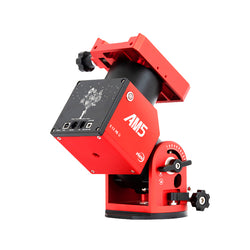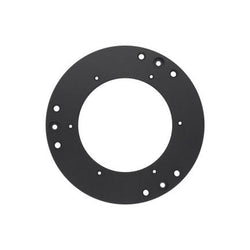ZWO ASI2600MC/MM DUO Astronomy Camera with Built In Guide Sensor


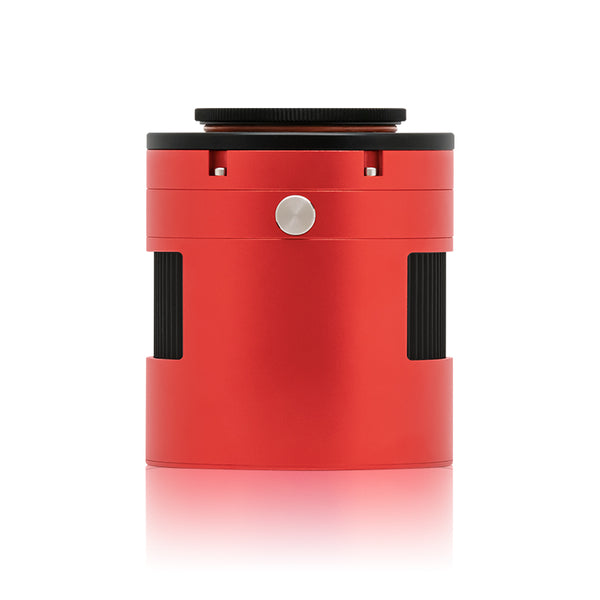
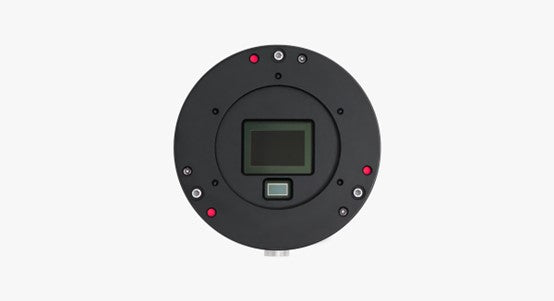

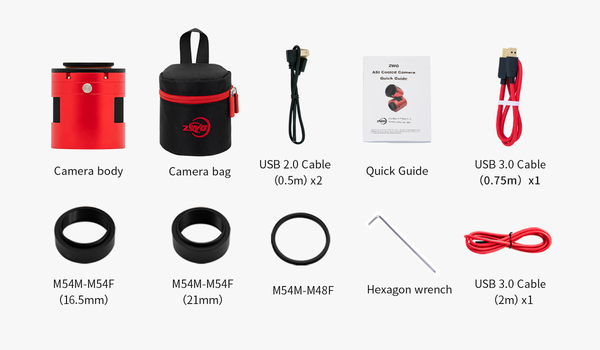
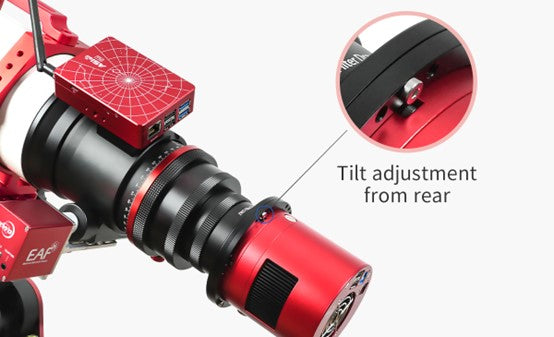
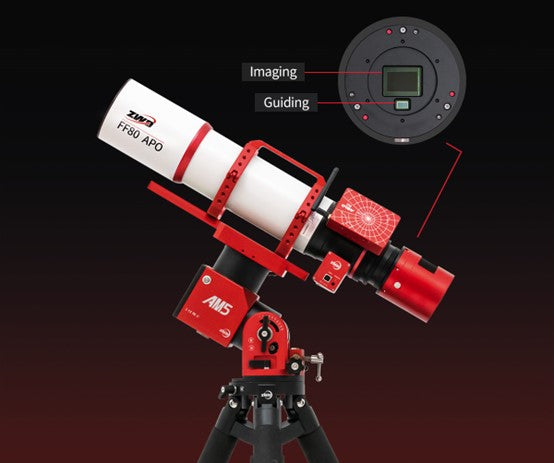
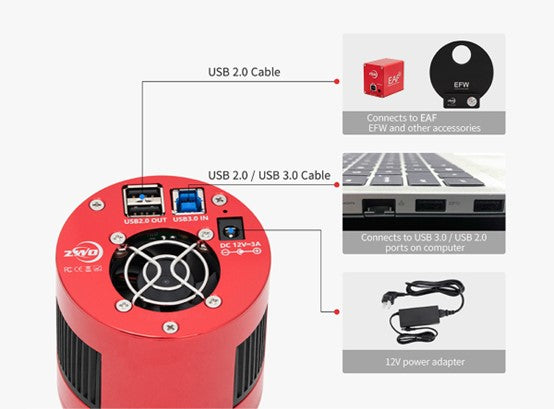
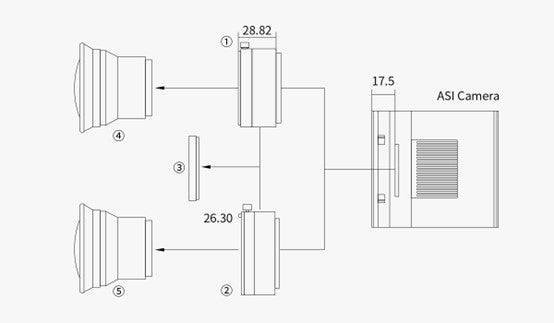

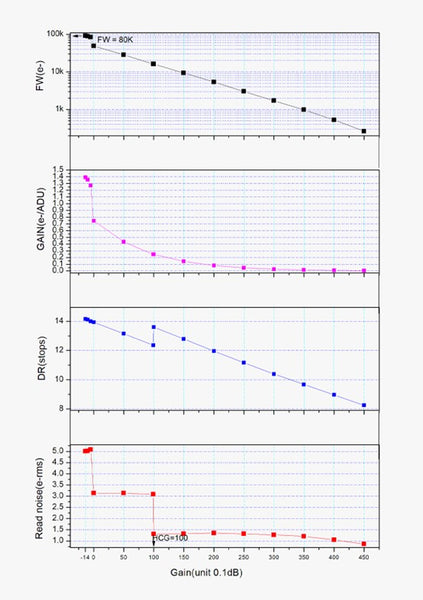
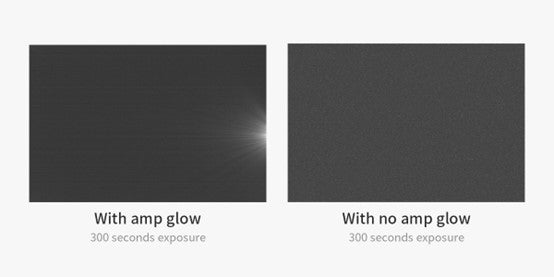
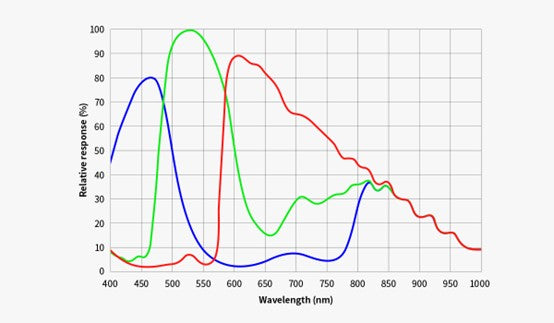
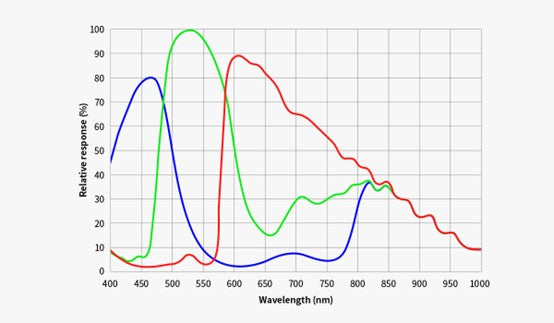
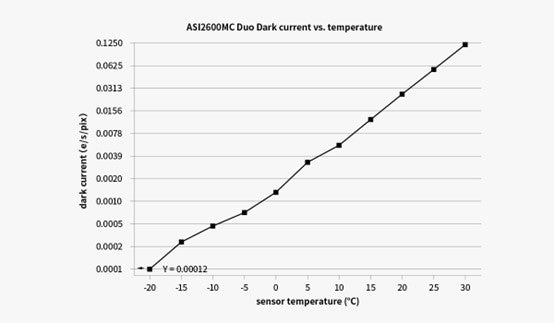
















ZWO ASI2600MC/MM DUO Astronomy Camera with Built In Guide Sensor
Model - MC Color
Why Purchase from All-Star Telescope?
Free Expert Support
Whether you are a first timer needing help with setting up or an enthusiast that can't quite make that one thing work, our expert staff are ready to support your needs. With decades of knowledge and first hand experience we've been there and we can help you through it!
Stress Free, Secure Transactions
You can trust purchasing and delivery with All-Star Telescope. All of our transactions are 100% secure and Level 1 PCI DSS compliant thanks to Shopify's ShopPay platform. For additional protection, we insure 100% of the value of every shipment we make. If it get's lost during shipment, we replace it. If it gets damaged during shipment, we replace it. We make sure your product arrives exactly as you would expect it to; we promise.
We also ensure privacy protection. We never keep any of your credit card information on file and any of your personal data is stored according to our policies.
30 Day Return Policy
Buy with confidence knowing that we accept returns up to 30 days after purchase. We want you to have something you will actually use and we are confident that we keep good quality products in our store with No Junk.
Price Match Promise
Shipping around for the best price is tough, we make it easier by offering the best pricing in the market. But if you find a better price on an in-store item somewhere else we will match it!
Recommended Accessories

Backyard Astronomer'S Guide, 4Th Edition B...
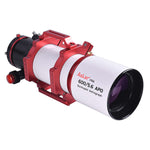
Askar FRA 600 Quintuplet APO Astrograph (F...
Sometimes there's no substitute for extra aperture. This 108mm refractor can gather a lot of light and will bring out extraordinary detail in the f...
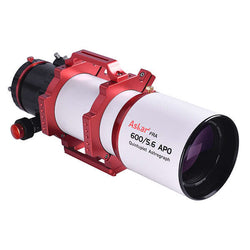
Askar FRA 600 Quintuplet APO Astrograph (FRA600)
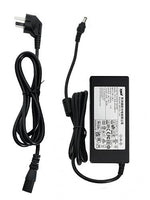
ZWO 12V 5A AC to DC Adapter (ZWO-DC12V5A)
Keeping a clean 5 amps for your astronomy accessories will keep things running smoothly. These use standard 5.5x2.1 plugs and work with ZWO accesso...
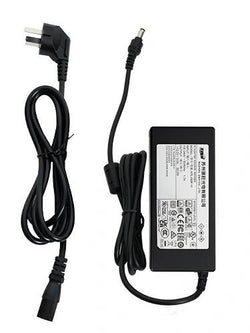
ZWO 12V 5A AC to DC Adapter (ZWO-DC12V5A)
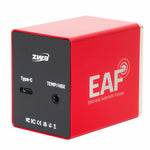
ZWO EAFN 5V Electronic Automatic Focuser (...
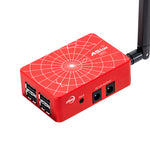
ZWO ASIAIR MINI (ZWO-ASIAIR-MINI)
The ZWO ASIair mini keeps almost all the performance of the larger plus while reducing size and cost by considerable margins. These are fantastic c...

ZWO ASIAIR MINI (ZWO-ASIAIR-MINI)

ZWO ASIAIR PLUS 256GB (ZWO-AIRPLUS-256)
You may have heard of the ASIAir, but if you haven't, it's a groundbreaking device that drastically simplifies astrophotography. This will allow y...
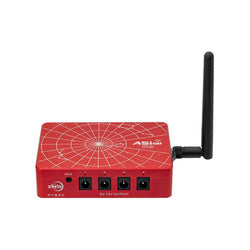
ZWO ASIAIR PLUS 256GB (ZWO-AIRPLUS-256)
Why we love the ZWO ASI2600MC/MM DUO Astronomy Camera with Built In Guide Sensor
Product Description
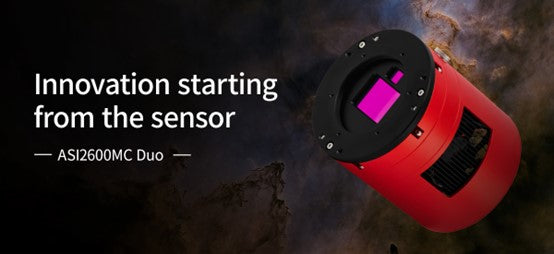
The ASI2600MC/MM Duo combines imaging and guiding sensor in one compact body. The main sensor is the Sony IMX571 coming with a native 16bit ADC, 14stops dynamic range and 3.76um square pixel array. The readout noise is as low as 1.0e, and the full well capacity reaches an incredible level of 73ke. And it has no amp glow!
The guide sensor is the Type 1/1.8 SC2210 with excellent NIR sensitivity. The sensor size is 7.68mm x 4.32mm. It has 4umx4um pixels with an array of 1920x1080 and a full depth of 8780e.
The stars on the corner of the guide images affected by reducers back focus distance might not be very round. It is not due to the sensor tilt and will not affect normal use.
Note: External power supplies are needed for all ASI cooled cameras. We recommend you use a 12V@3A DC Adapter (5.5*2.1mm, center pole positive) or lithium battery with 11-15V to power the camera. Be aware that using power supply out of this voltage rage will probably lead to irreparable damage to the camera.
Two-in-one design
Thanks to the compact design, the ASI2600MC Duo only needs one USB cable for control. It reduces potential cabling issues and improves setup speeds. You don't need a separate OAG and guide camera.

Tilt Adjustment from Rear (Optional)
The 3 points from the rear make tilt adjustment much easier without the trouble of removing the tilt plate from the camera.

Guide Sensor

The SC2210 sensor taken from the ASI220MM Mini camera features very high sensitivity. The QE peak value reaches 92% at 500nm. The readout noise is as low as 0.6e. As the new generation of guide sensor, it has achieved great results in guiding, proved by hundreds of astrophotographers.

Main Sensor
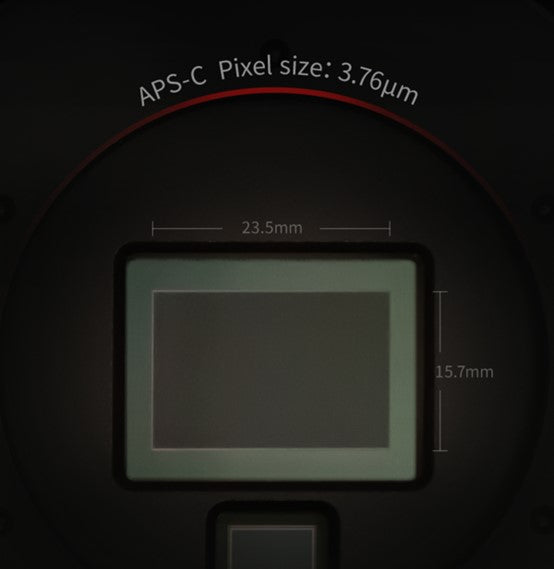
The main sensor IMX571 features an APS-C format and 26MP total pixels. The size is 23.5mm in width x 15.7mm in height, and the diagonal is 28.3mm. The 3.76um x 3.76um small pixel size accommodates an impressive full depth of 50ke. With the new hardware technology, it is even extended to 73ke.
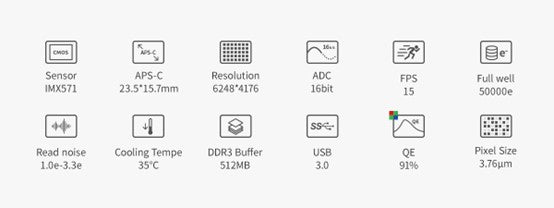
Performance Improvement Comparison
The ASI2600MC DUOs main sensor is a step up from the ASI2600MC-Pro

STARVIS technology
ASI2600MC DUO is based on Sony STARVIS technology.Sony’s back-illuminated CMOS image sensor improves the sensitivity and noise reduction – the key factors to enhancing image quality.

Camera Performance
Native 16bit ADC
This 16bit ADC is not a CCD 16bit ADC. It can really achieve a dynamic range output of 14stops, which will significantly improve the image sharpness and contrast, and also create smoother and more natural colour transitions.
FPS
ASI2600MC Duo's max FPS in RAW 8 mode at full resolution is 15FPS, which is even quicker compared to ASI2600MC Pro.
Extended full well mode
The full well capacity of ASI2600MC Duo is extended to 73ke, which is 1.46x larger than ASI2600MC Pro.

USB 3.0 & 512MB DDR3 buffer
With the match of USB 3.0 and 512MB DDR3 buffer, ASI2600MC Duo provides stable and secure data transmission that can effectively avoid the frame-dropping issue during long exposures.
No Amp Glow
Traditional CMOS sensors produce a weak infrared light source during operation quite often seen in the corner of uncalibrated images. It is the tell-tale signs of amp glow. As the ASI2600MM Duo uses zero amp glow circuitry, you won't have to worry about amp glow even when using high gain, long exposure imaging.
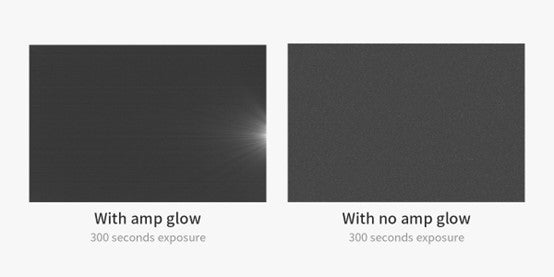
QE (Quantum efficiency)
Based on our testing results, the QE peak value of ASI2600MC Duo is over 91%.
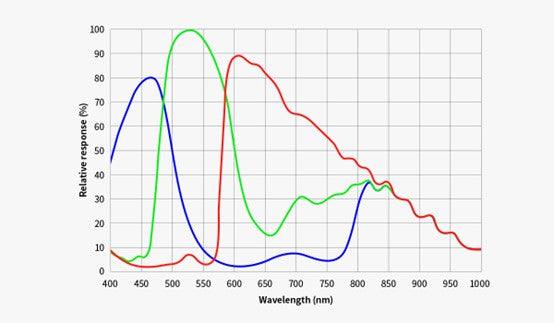
2-stage TEC cooling
Thanks to the two stage TEC cooling, ASI2600MM Duo can lower the CMOS sensor temperature to more than 35 degrees Celsius below ambient temperature, which can greatly reduce dark current generation and sensor noise even during extended exposure times.

*The Delta T 35℃ is tested at 30℃ ambient temperature. It might get down when the cooling system is working for a long time. Also, as the ambient temperature falls, the Delta T would also decrease.
Dark Current Noise
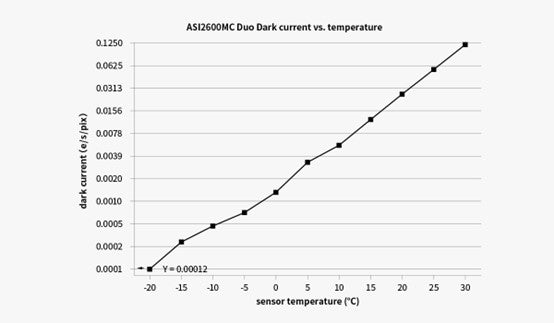
Anti-Dew Heater
There is a polyimide heater completely fitting the protective window in the ASI2600MM Duo camera. It can help avoid any potential annoying dew or icing issues depending on the environment in which you capture images.
The power of the heater is around 5W. You are free to turn it off anytime in your photography software if you want to save power.
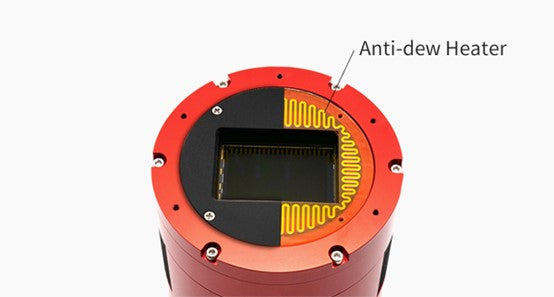
What's in the Box
Specifications
| Model | ASI2600MC Pro | ASI2600MC Duo |
| Sensor | SONY IMX571 | SONY IMX571 SC2210 |
| Max FPS | 3.51 FPS | 15 FPS (RAW8) |
| Full Well | 51Ke | 51Ke Normal Mode Over 80Ke at Extended full well mode |
| DDR3 Buffer | 256MB | 512MB |
| Adapater | M42*0.75 | M54*0.75 |
| Guiding | Not Supported | Supported |
Connections to External Devices
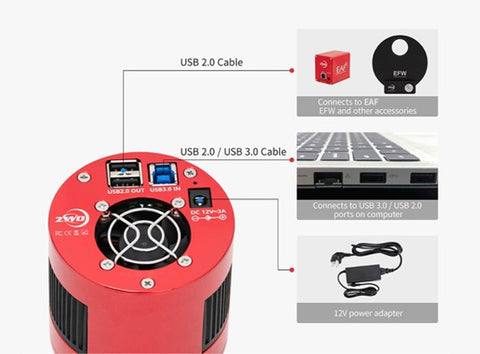
Connection to Nikon/Canon Lens
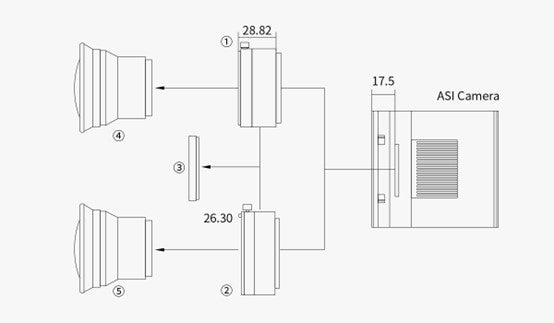
- Niko-T2 adapter
- EOS-T2 adapter
- 2" filter
- Nikon lens
- Canon lens
Structural Dimension Diagram
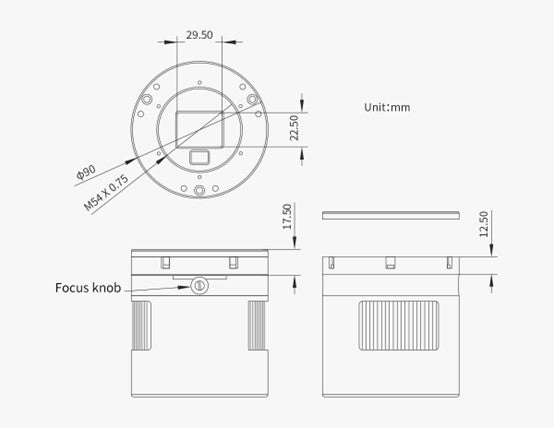
Additional Articles, Videos, and Links
External Links

Astrophotography for Beginners Step 4: Shooting Deep-Sky Images
Taking deep sky pictures can be daunting, luckily there is an easy process to follow to allow you to get great shots! Here is the typical process for actually taking deep-sky images in the field.
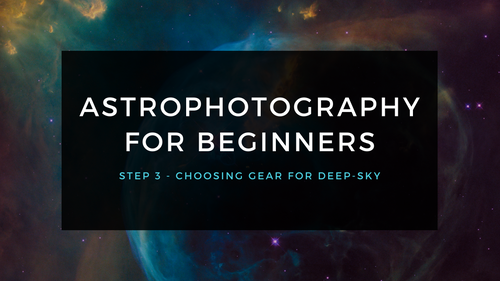
Astrophotography for Beginners Step 3: Choosing Gear for Deep-Sky Imaging
Using a star tracker gains you experience with the fundamentals of deep-sky imaging. Shooting the Moon gains you experience focusing and framing through your telescope. Through your sessions you’ll...
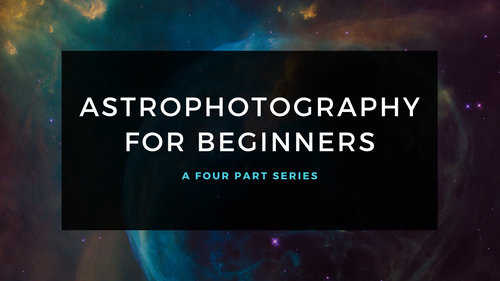
Astrophotography for Beginners - Start Here: Getting into Astrophotography Step by Step
Shooting the night sky has never been more popular, nor easier. The choice of equipment has also never been better, or more affordable. However, as per the advice given by Dickinson and Dyer in the...
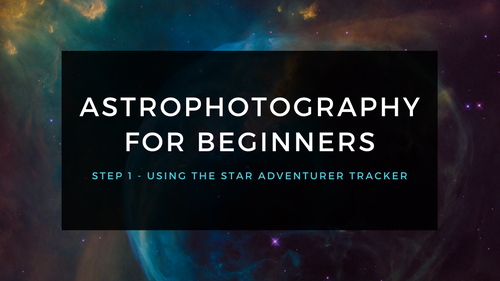
Astrophotography for Beginners Step 1: Using the Star Adventurer Tracker
By far the most economical and easiest way to capture beautiful images of the Milky Way and large deep-sky objects like the Andromeda Galaxy (shown here) is to use a star tracker. Here are steps an...
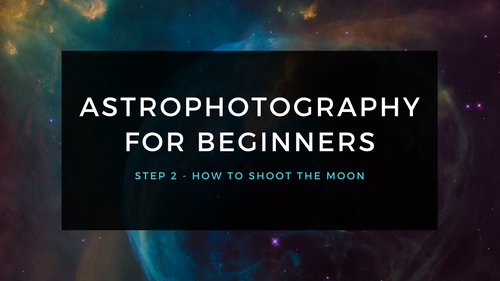
Astrophotography for Beginners Step 2: How to Shoot the Moon
Close-ups of the Moon are rewarding, and an easy way to learn to shoot through your telescope. While good results are possible with a phone camera clamped to an eyepiece (as shown below), this tuto...





